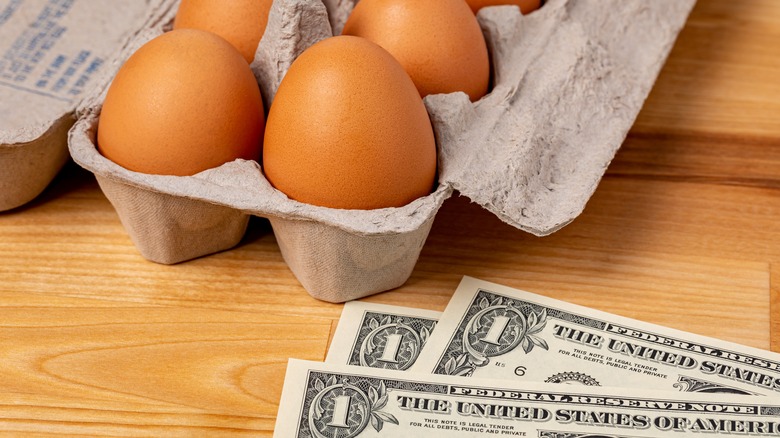Egg Prices Have Finally Dropped To An Affordable Level
After peaking at an average price of $4.82 per dozen in January, egg prices are finally going in the right direction: downward. As of April, the Bureau of Labor Statistics reported an average price of $3.27 per dozen, and prices have only continued to drop in the weeks since.
At one Ohio location, for instance, you can currently buy a dozen eggs at Meijer for $1.69 or at Walmart for $1.24. That's pretty wild, considering how just a few months ago purchasing a few dozen eggs required budgeting or seriously weighing the thought of buying a chicken to save money.
Of course, no one's complaining about the drop in egg prices, though some customers might be curious as to how the price drop finally happened. While there's no simple answer, we can point to several factors, including inflation easing up, the bird flu outbreak tapering off, and flocks recovering. Naturally, with a larger supply of eggs, prices can decrease.
A deeper look at the factors allowing egg prices to drop
Although the U.S. is still in the throes of inflation, we're arguably no longer facing the food inflation crisis that we were just six months ago. In an interview with USA Today, one expert pointed out that the current inflation rate is about 5% rather than the 9.5% it hit in June 2022. Granted, the Federal Reserve aims for an inflation rate of 2% for "maximum employment and price stability," and time will tell if or when that happens.
As for the bird flu outbreak that affected millions of egg-laying birds in 2022, rates are similarly dropping. While there the virus affected commercial flocks in more than 50 instances this time last year, per the USDA, the agency has only documented seven cases as of March 2023. Now, the flocks are beginning to recover, and the number of egg-laying birds is again increasing. And as you can imagine, more chickens means more eggs. More eggs, in turn, mean lower prices. Time to hop back on all the best egg recipes!

